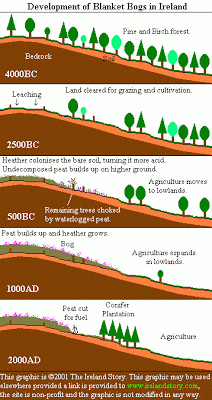Should Men Lay Down Their Swords?
In addition to the various "Save Tara" campaigns against the building of the M3 motorway interchange near Tara Hill, campaigns that also seem to challenge each other, there is also challenge regarding who is truly the Arch Druid of Tara, and even a challenge over whether such a position should exist.
I am not going to quote names of the Arch Druid challengers, but one is a man and one is a woman and both are claiming to be more druid than the other. Both also carry and teach totally different stories of the Tuatha De Dannan and each say the other's story is wrong. This seems to be a continuation of a lesson we have not learned, the lesson of what happens when spiritual wisdom is attempted to be structured into a religion, sometimes disguised as being called an "order" and no longer expressed as a craft.
Tlachtga – The druid woman
To refer to my own thoughts, or maybe faith, I believe that nearby Hill of Tlachtga, now listed on maps as Hill Of Ward, is the true seat of Ireland's Arch Druid. Tlachtga was a "druid" woman, that some would call a goddess, and this hill was her temple. Tara was the seat of Kings and Tara did have a druid priest, who was overseen by the Arch Druid of Tlachtga.
What this leads my thoughts back to is not as far back as the Tuatha De Dannan but how relations and challenges must have been between St. Patrick and St. Brigid. Both the lives and spirits of Patrick and Brigid are both fictional and very real. There are writings that are said to be of Patrick's hand but there is nothing preserved that's written by the hand of Brigid. All writings about her that have survived have been from the hands of male scribes.
Faith of St. Patrick or St. Brighid?
Its a complex story, but during the 5th century Celtic Christianity became very established with St. Patrick's mission ruling Christianity all over Ireland from Armagh except the region of Brigid's mission ruling through what is now Leinster.
During ancient times the "power" of druid priests evolved from being spiritual and academic teachers to also being law makers and law enforcers. The role of kings and royal families concentrated on deciding on the ownership of land which often led to battles, peace treaties and trading terms. These dual roles of royalty and priests continued through early Celtic Christianity years and they appear to have operated very differently within Brigid's Leinster than around the rest of Ireland.
The earliest of women’s rights to stewardship
Male warriors, later to known as knights were both land owners and sword owners. A man's sword was more a statement of his position than as a weapon of battle. I am sure there is a connection to the shaping of early swords with the symbol of the cross.
If men did not produce male heirs through their wives it was ruled that there was nobody to pass his sword to when he died. His sword was traditionally thrown into a lake or deep river and his land was inherited by the king of the region. His wife and possible daughters also became the property of the king who would either decide on their marriage or declare them as slaves. Stories tell of this continuing to be the way of life
through Patrick's Ireland, though I believe he provided the option of mourning wives and daughters to accept the veil of the church and become nuns.
Brigid appears to be best known for elevating the value of women by demonstrating and allowing their skills of nurturing, healing, crafts and protection to recognized and respected as having the same equality of power, position and value as the men's power of hunting, negotiating and stewardship. What she may be less known for is her laws for family. If a woman's husband died before she bore an heir she was entitled to carry his sword and land but her main role in life would suddenly become the same as her husband's was. This was probably the first time that women were given a choice of respected independence. It would continue this way for the lady of the land and sword until she ever remarried to a man that she chooses and passes the sword and land to, not as physical owner but as a continuing steward.
So what about the reverse role, a man laying down his sword and giving up his land to live the life of nurturing, healing, crafts and protection. It would be thought this happened when men who accepted the calling of the cross rather than the sword. Brigid appeared to be a wonderful support and teacher of these men. However, there does not appear to be any ancient tales of men passing their swords and lands to their wives while they took over the caring and nurturing roles from their wives.


Comments
Post a Comment